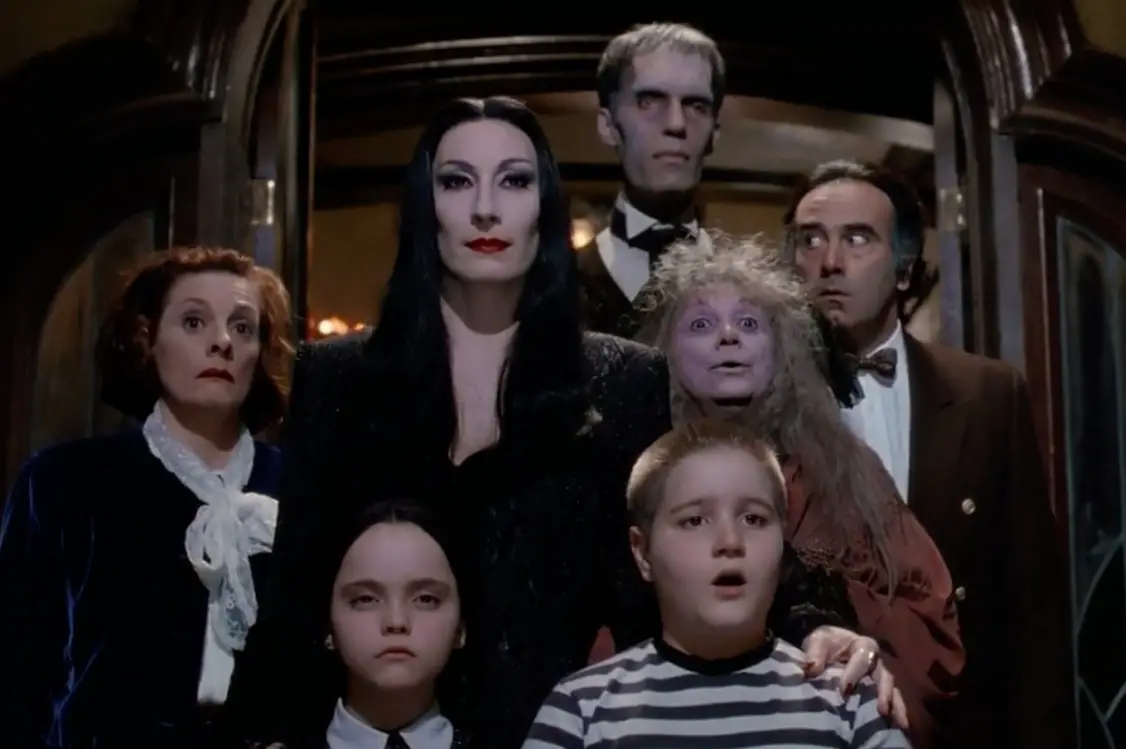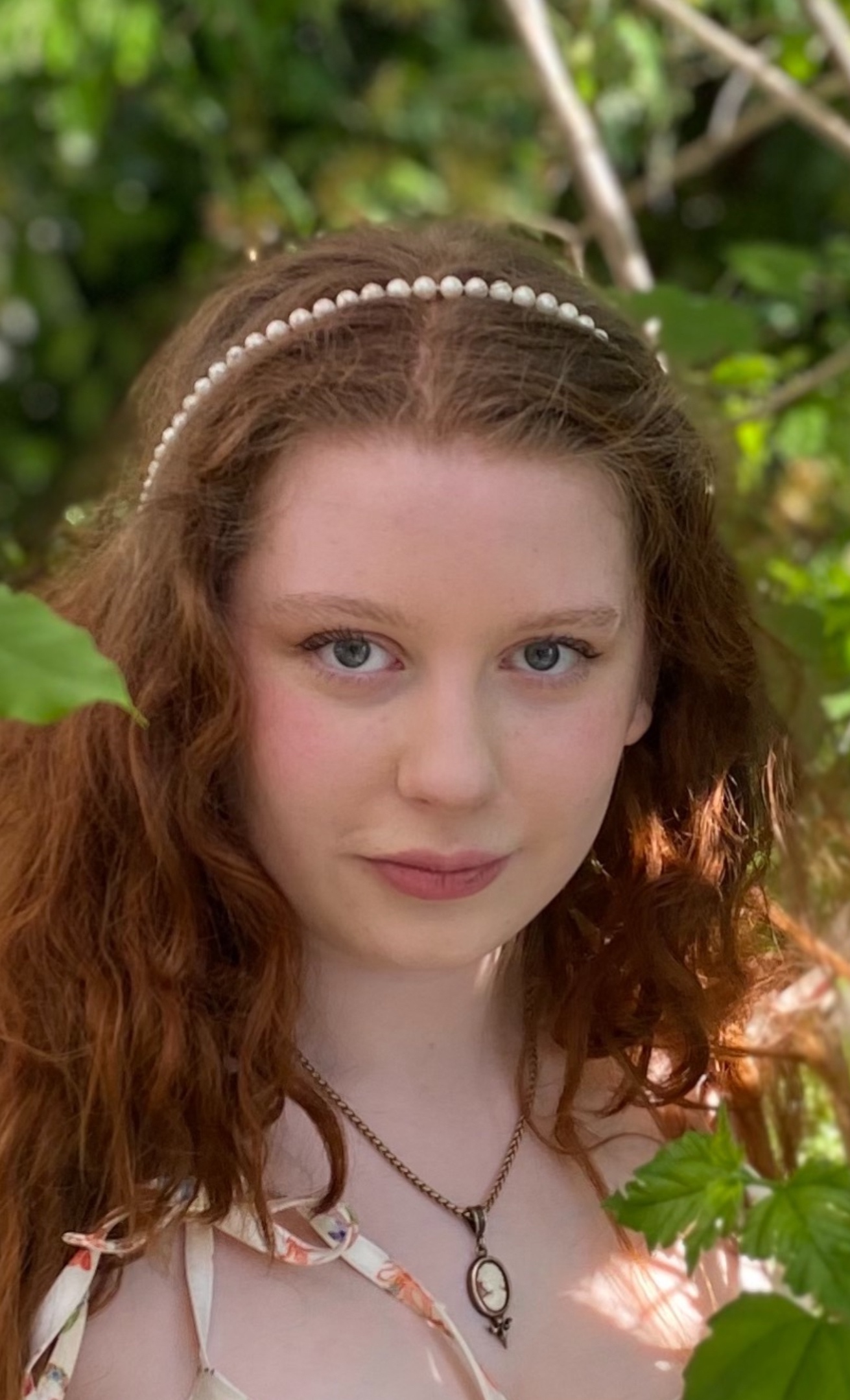A clear image emerges when thinking of the Addams family: gothic aristocrats adorned in decadent black apparel, strolling through their decrepit Victorian mansion. But aside from their humorously macabre nature, they taught us to love one’s neighbor, even if they have a disembodied hand scampering behind them.
The Addams family, a unit of presumed weirdos, has been captured in American culture for decades — with different casts of actors throughout the years. Morticia is the goth bombshell matriarch — her vampiric elegance is fabulously ominous. Gomez, the pinstriped-suit-wearing patriarch, is campy and quick with his morbid puns. Pugsley, the son, romps around playing with knives and getting into mischief.
The most famous Addams, Wednesday, is known for her deadpan, macabre comments and unnerving take on girlhood. The character is so beloved that Netflix is currently filming a series centered around her that is set to air later this year. Starring Jenna Ortega as the famous dead-obsessed cultural icon, the show will follow Wednesday into her teen years. But, even before Netflix decided to extend the Addams family universe, the long history of these characters has taught people to identify with whom they consider to be the “Other.”
The Addams family first entered American culture in the 1930s, when New Jersey-born cartoonist Charles Addams sold his cartoons to The New Yorker. Addams, who also had a spooky streak, enjoyed exploring abandoned mansions growing up and even married his second wife in a pet cemetery. The creepy family’s first cartoon depicted a snappy vacuum salesman trying to sell his product to Morticia and Gomez, who are surrounded by cobwebs and bats in their grandiose hallway. Even here, the fictional family touches on a universally relatable American issue: annoying salespeople who push until they sell their product.
Depicting a grim take on everyday topics within the domestic sphere is a recurring theme of the franchise. One of Addams’ cartoons shows Morticia asking her witchy neighbor to borrow some cyanide — a spin on asking one’s neighbor for eggs or sugar. Through this comedic portrayal of seemingly regular occurrences, the Addams family, even early on, encouraged audiences to relate to the weird family next door.
When a television rendition, for the first time branded “The Addams Family,” aired on ABC in 1964, it added some much-needed spunk to break up the hokey sitcoms of the time. The plots, although surprisingly wholesome, allowed viewers to watch Wednesday play with her pet tarantula, and Morticia tend to her carnivorous plant named Cleopatra. A close-knit family is also found in the 1990s box-office films of the same name.
The family members are unequivocally loyal to each other. For instance, Gomez’s intense adoration of Morticia is beautiful and revolutionary for a family dynamic that holds men as the end-all power. In one of the 1990s films, Gomez tells Morticia, “You are the only cactus in the garden of my life.” That’s the ultimate compliment for the Addams family, especially considering that Morticia prefers her roses beheaded, thus maiming them frequently. Not only is Morticia Gomez’s world, but he strongly opposes misogyny.
Interestingly, their oddities oppose the mainstream ideal, showing that one can be content in the unusual. People begin to see eccentric amiability within their quirks, regardless of the fact that the family comes from a long lineage of old money. They ironically find a lifestyle that works for them through their obsession with death — even if that involves eating stew made from scorpions.
The family has unusual traits, which are evident when they perform a gory pirate scene for a school talent show including faux blood spraying across the audience. The Addams live blissfully unaware that they are strange at all, as they find their confidence and identity in what most people would view as weird. By introducing the family’s antagonists in the 1990s, the two films challenged viewers’ assumptions. “The Addams Family” and “Addams Family Values” are arguably the most famous characterizations and feature Anjelica Huston as Morticia, Raul Julia as Gomez, and Christina Ricci as Wednesday.
Antagonists in film and literature are frequently depicted as people similar to the Addams in their shadowy, eccentric and mysterious ways. However, the two films change that narrative, because viewers are instead shown blond-haired, overly chirpy, mainstream character types as the villains. At Wednesday’s summer camp, the snobby fellow camper Amanda Buckman constantly taunts her for her creepy appearance. She and the other campers come adorned in pinks and florals, while Wednesday keeps to her all-black garb.
The once ominous character becomes the most unproblematic, showing that appearances are deceiving. Viewers also meet Debbie (played by Joan Cusack), a serial killer who infamously marries men and kills them for their money. Disguising herself as the family’s babysitter, she wins over the heart of Uncle Fester, a lovable, slightly deranged man who can light a lightbulb with his mouth. She takes Fester away from his family, seducing him while simultaneously planning his demise. Her villain origin story is also a heightened version of one that’s mainstream: her parents gave her a Malibu Barbie instead of a Ballerina one, pushing her to kill them both.
Ironically, in their Barbie-like mansion, Debbie grooms Fester so he seems normal by dressing him up and fitting him in a blond wig. But Morticia’s confrontation with the murderous woman says it all, “You have gone too far. You have married Fester, you have destroyed his spirit, you have taken him from us. All that I could forgive. But, Debbie … pastels?”
“The Addams Family” franchise has and will continue to have a lasting impact on American culture. They are perfectly bizarre, but overall, not all that different from the average Joe. The work of Charles Addams that kickstarted an artistic and cinematic legacy is powerful beyond its comedy. The family teaches Americans to try to relate to those that are considered odd or not commonly considered as “sweet” rather than taking them for granted. Overall, the lovably macabre family encourages one to introduce themselves to the weird family next door. Through this, we can learn that the pursuit of happiness comes in different forms — even if that includes wearing only black and having a pet lion.

















